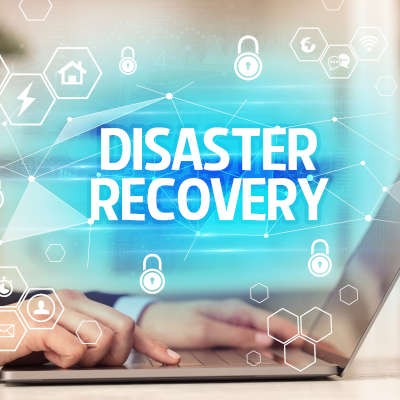Not all businesses will look at disaster recovery the same way, but if you want your business to have the kind of continuity that will allow it to get through tough situations, doing your best to formally create a disaster recovery policy will put you in the position to weather any storm you encounter.
A Brief Explanation of Disaster Recovery
Every business has some type of business continuity plan, and if they don’t, they should. It outlines the actions that need to be taken to ensure that your business isn’t mortally affected by negative situations. Within this plan is disaster recovery, which is a specific plan to get your operations up and running after a “disaster”. Here are a few examples of disasters that could affect your business’ continuity:
- Natural disaster - Flood, hurricane, tornado, wildfire, electrical storm, worldwide pandemic; the list goes on and on.
- Human error - Accidental, negligent, or deliberate situation an employee puts the business in which causes a disaster-like result.
- Cyberattack - Data breaches can be some of the worst, especially when people’s sensitive information is involved.
- Failing Hardware - If the right component goes out at the right time it can have devastating effects on your business.
No matter what problems your business has to deal with, getting your resources back up and running as fast as possible should be one of the core priorities of any negative situation. The reality of the situation is that every minute your business breaks continuity is a massive problem, and can lead to some very unpleasant results.
The Importance of DR
The first thing you need to know about your disaster recovery policy, is that it has to be created with the notion that it’s a matter of when, not if, you will need to use it. The statistics reinforce this idea. Three-out-of-five businesses that experience a prolonged system outage will be out of business within two years of the event. So, even if you are able to get back up and running again, the lost revenue may eventually catch up and ruin your business.
With that knowledge, the first suggestion we’d make is to stay calm. A business owner—who has toiled and taken his/her business from a one or two-man operation to an organization that people and their families depend on—needs to make calculated decisions to get their business back up and running properly. Acting impulsively will often lead to making decisions that will further hurt your business’ chances of returning to normalcy.
The first real action that needs to be undertaken is to contact the people that will need to know that a disaster has occurred. Setting up a call list to notify people that need to know is a good practice. Since the focus has to be on getting data accessible, once department managers are notified, they can decide how and when to notify their subordinates. Regardless of how you plan to set this up, communication will be key to get your business back up and on track.
One of the most important parts of a disaster recovery strategy is to have digital copies of everything. We suggest using a Backup and Disaster Recovery (BDR) service that backs up data incrementally and saves multiple copies of data in a network-connected device, as well as in an offsite data center. Having a comprehensive backup is a core strategy of any disaster recovery platform.
Depending on the disaster, you may need to find alternative means of managing your workforce. Being able to provide your staff with that ability in the face of a disaster is extremely useful to keep revenue flowing in. You may not be a fan of remote working, but when disaster strikes it may be your only outlet; and, you may be surprised just how productive your workers will be from outside the office.
The end result will be systems up and running, your data and applications able to be accessed by remote workers, and your business’ data intact. Outside of this, your business continuity policy will handle the rest. DR is about getting your business’ assets up and running in the face of a disaster, whether that is a deleted file or a worldwide pandemic.
If you would like to talk to one of our IT professionals about your disaster recovery policy, call us today at (305) 448-6126.

